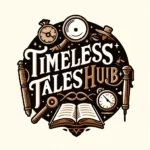“The Mysteryes of Nature and Art” by John Bate is a delightful exploration into the intricate and often whimsical realm where science and art converge. Penned in the early 17th century, this tome is not your typical novel but a compendium of wonder, a collection of knowledge and inventions that teeters on the edge of modern science and alchemy.
Imagine stepping into a chamber of curiosities, where every nook bristles with odd gadgets and the walls are scribbled with enigmatic diagrams. Here, John Bate, part scholar, part mad artist, guides us with a twinkle in his eye, eager to reveal secrets of the universe that seem as much magic as they are science.
Firstly, we dive into the art of “Water Workes.” Bate presents devices that would not be out of place in the most elaborate Renaissance fairs. Fountains that dance to unseen tunes, water organs that gurgle melodious notes, and contraptions meant to amaze and befuddle. It’s all a game of physics, but Bate narrates it with the excitement of a magician pulling rabbits from a hat.
Next, our whimsical guide ushers us into the world of “Fireworks.” Here, the book takes a pyrotechnic turn, detailing the composition and assembly of fireworks. But Bate’s approach is not merely technical; he imbues it with a sense of spectacle and drama, as if each spark and explosion were a star being born. His detailed descriptions serve not just to inform but to ignite the imagination, painting the night sky with bursts of colors and sounds.
In a sudden shift, Bate tackles “Drawing, Limming, and Etching,” turning from the raucous outdoors to the quietude of the artist’s studio. He discusses pigments and brushes with the same fervor as he did fire and water, linking art to the natural elements from which its materials are derived. The irony is palpable as he teaches the reader to capture the ephemeral beauty of nature using minerals and oils, crafting permanence from the fleeting.

The final section, perhaps the most enigmatic of all, is devoted to “Diverse Experiments.” Here, Bate becomes the alchemist, the early scientist. He provides experiments that blend the boundaries between natural philosophy and practical trickery, inviting the reader to question what is real and what is merely perception. He talks of optical illusions and mechanical devices, each experiment a puzzle both confounding and enlightening.
Throughout this eclectic manual, John Bate writes with a mischievous air, fully aware of the marvels and mysteries he presents. It’s as though he chuckles between the lines, daring the reader to believe, to doubt, and above all, to marvel. This book is not just a read; it’s an experience, a playful romp through the mysteries of nature and the artistry of mankind.
So, as you leaf through these pages, prepare to be baffled, to be educated, and, most importantly, to be entertained. Bate’s work reminds us that the world is full of wonders, some understood and many more waiting to be discovered, in the interplay of shadow and light, substance and idea, reality and perception.


